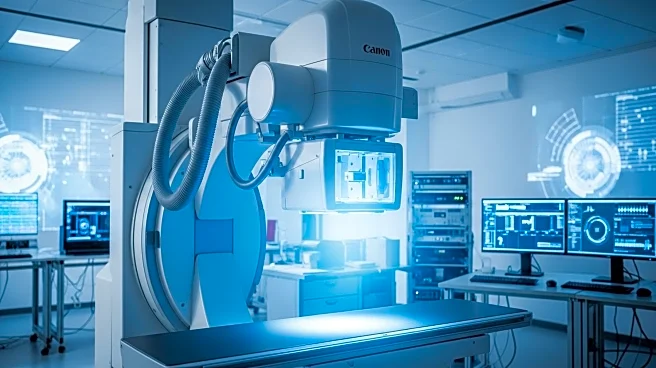What is the story about?
What's Happening?
Researchers at Sandia National Laboratories have developed a new X-ray technology called colorized hyperspectral X-ray imaging with multi-metal targets (CHXI MMT). This innovation aims to improve the resolution and clarity of X-ray images by using varied metals such as tungsten, molybdenum, gold, samarium, and silver. The technology involves creating X-rays with a smaller focal spot, which results in sharper images. By using different metals for each dot in the anode, the team can produce colorized images that offer revolutionary image clarity and a better understanding of an object's composition. This advancement is expected to have applications in airport security, quality control, nondestructive testing, advanced manufacturing, and medical diagnostics, particularly in identifying cancer and analyzing tumor cells.
Why It's Important?
The development of CHXI MMT technology represents a significant leap forward in X-ray imaging, with potential benefits across various sectors. In the medical field, the enhanced resolution and colorization could lead to earlier and more accurate detection of cancer, improving patient outcomes. The ability to differentiate between materials with greater precision could also enhance security measures and quality control processes in industries reliant on nondestructive testing. This technology could lead to more effective diagnostics and safer practices, potentially reducing healthcare costs and improving public safety.
What's Next?
The team at Sandia National Laboratories plans to continue innovating and expanding the applications of CHXI MMT technology. They aim to further improve the detection capabilities for medical diagnostics and security applications. The researchers hope to identify threats faster and diagnose diseases more quickly, contributing to a safer and healthier world. The technology has already received recognition, winning an R&D 100 award, which may lead to increased interest and investment in further development and commercialization.
Beyond the Headlines
The introduction of colorized hyperspectral X-ray imaging could shift the paradigm in medical diagnostics, offering a new way to visualize and understand complex biological structures. This could lead to ethical considerations regarding the accessibility and affordability of advanced diagnostic tools. Additionally, the technology's application in security and manufacturing may raise questions about privacy and the balance between safety and personal freedoms.
AI Generated Content
Do you find this article useful?













